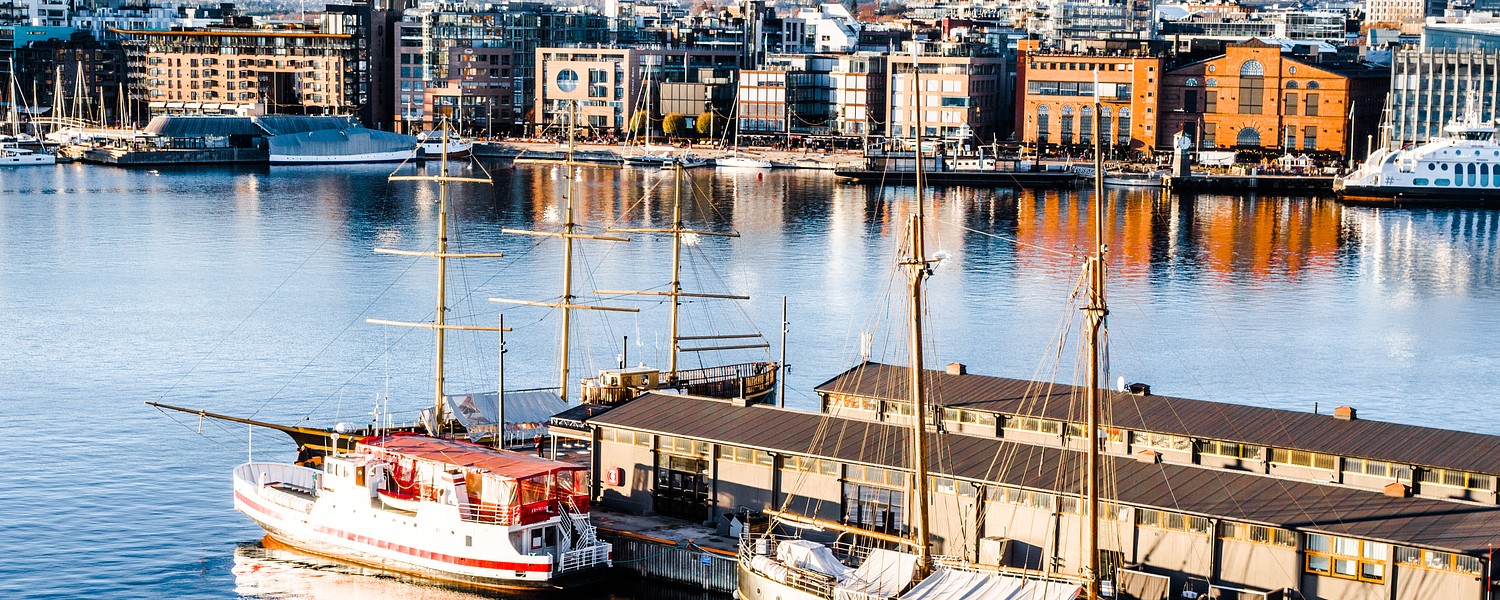
Provided by:
DigitalMammoth/Shutterstock.com

Our travel guides are free to read and explore online. If you want to get your own copy, the full travel guide for this destination is available to you offline* to bring along anywhere or print for your trip.
*this will be downloaded as a PDF.Price
€4,95
The City
The guide was updated:
Nestled between the Oslofjord and the surrounding green hills, Oslo is a vibrant city which has evolved from its humble origins as a Viking settlement to become a thriving modern metropolis.
Founded around the year 1000 AD by the Viking king Harald Hardrada, Oslo served as an important trading hub. Throughout the Middle Ages, the city experienced various power struggles and changed hands between Norwegian, Danish, and Swedish rulers.
In 1624, a devastating fire razed much of the city to the ground. This catastrophe presented an opportunity for King Christian IV of Denmark-Norway to redesign Oslo, granting it city status and renaming it Christiania.
The city flourished under Danish rule and later came under Swedish control during the Napoleonic era. Fast forward to 1905, when Norway gained independence from Sweden, and Christiania regained its original name, Oslo, as the capital of the newly established Norwegian state.
The early 20th century witnessed significant urban development, with grand public buildings and cultural institutions shaping the city's skyline.
In recent years, Oslo has become renowned for its sustainable practices and environmental initiatives, including its eco-friendly transportation. Parks and green spaces are integral to Oslo's urban fabric, providing residents and visitors with ample opportunities to connect with nature.
Today, Oslo is a cosmopolitan city, blending a modern and innovative outlook with its historical charm. It is home to world-class museums, including the iconic Viking Ship Museum and the Munch Museum. The city's culinary scene is thriving, with a diverse range of international cuisines and a strong emphasis on locally sourced ingredients.
Founded around the year 1000 AD by the Viking king Harald Hardrada, Oslo served as an important trading hub. Throughout the Middle Ages, the city experienced various power struggles and changed hands between Norwegian, Danish, and Swedish rulers.
In 1624, a devastating fire razed much of the city to the ground. This catastrophe presented an opportunity for King Christian IV of Denmark-Norway to redesign Oslo, granting it city status and renaming it Christiania.
The city flourished under Danish rule and later came under Swedish control during the Napoleonic era. Fast forward to 1905, when Norway gained independence from Sweden, and Christiania regained its original name, Oslo, as the capital of the newly established Norwegian state.
The early 20th century witnessed significant urban development, with grand public buildings and cultural institutions shaping the city's skyline.
In recent years, Oslo has become renowned for its sustainable practices and environmental initiatives, including its eco-friendly transportation. Parks and green spaces are integral to Oslo's urban fabric, providing residents and visitors with ample opportunities to connect with nature.
Today, Oslo is a cosmopolitan city, blending a modern and innovative outlook with its historical charm. It is home to world-class museums, including the iconic Viking Ship Museum and the Munch Museum. The city's culinary scene is thriving, with a diverse range of international cuisines and a strong emphasis on locally sourced ingredients.


